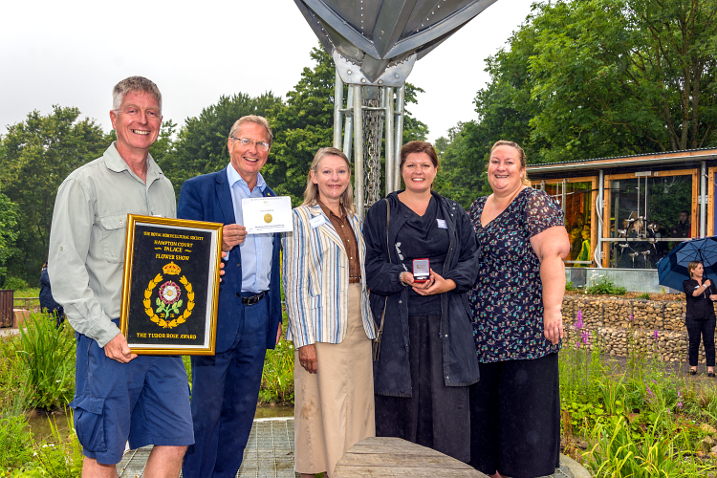WWT Washington Waterlab garden: How rain gardens can help tackle climate change
Gardeners are getting an insight into dealing with the possible effects of climate change, at a new WWT Washington Wetland Centre garden exhibit.
It’s likely that British gardens will need to withstand more periods of both drought and heavy rain in the future. So the new “Working wetland” garden is demonstrating how gardens can manage too much or too little rainfall.
The garden assumes a green roof will be impractical, so instead it channels rainfall off a central roof into a series of recycled troughs filled with gravel and marsh plants. Anyone can do this instead of having your drainpipe pointing directly down into your drains.
The troughs filter out dust, leaves, twigs and bird poo. The marsh plants take up some of the water, but after heavy rain the troughs overspill into a pond surrounded by plants. Some of the water slowly evaporates or transpires away.
The pond can overflow into permeable paving, flower beds and hollows, all of which allow water to soak away slowly into the ground.
Central Developments Manager Simon Rose at Wildfowl & Wetland Trust said:
“The concept is really simple. It’s just a case of holding back rainwater and releasing it slowly. This helps to stop the garden from flooding during heavy rainfall, and keeps water reserves back for when it’s dry.
“If your garden slopes downhill, you can even use a series of troughs, channels and ponds as a slow watering system to regulate water flowing through your garden.
“The fact the pond is rain-fed with clear, clean water helps to attract wildlife. By slowing down water running off your garden you’re also helping your local environment cope with floods and drought too. That’s why it’s called the “Working Wetland” garden – because it mimics the water-storing properties of Britain’s moorlands and wetlands.”
 Left to right - WWT's Simon Rose, CEO Martin Spray, Sue Alexander from HSBC, garden designer Jeni Cairns and WWT's Gill Pipes
Left to right - WWT's Simon Rose, CEO Martin Spray, Sue Alexander from HSBC, garden designer Jeni Cairns and WWT's Gill Pipes
If you want to try “rain gardening” at home, you’ll find lots of inspiration for which plants to use. Species like meadowsweet, purple loosestrife and ragged robin are suited to dry conditions with bursts of heavy rain. At Washington Wetland Centre, WWT has contrasted their purple and white with some fabulous yellow flag iris.
The Working Wetland garden has been kindly donated to WWT by HSBC Bank as part of their Water Programme. HSBC originally commissioned Jeni Cairns of Juniper House Garden Design to create the garden for last year’s RHS Hampton Court Flower Show where it won best showgarden and a gold award. WWT is delighted to keep the garden working and creating a lovely space for everyone at Washington.



